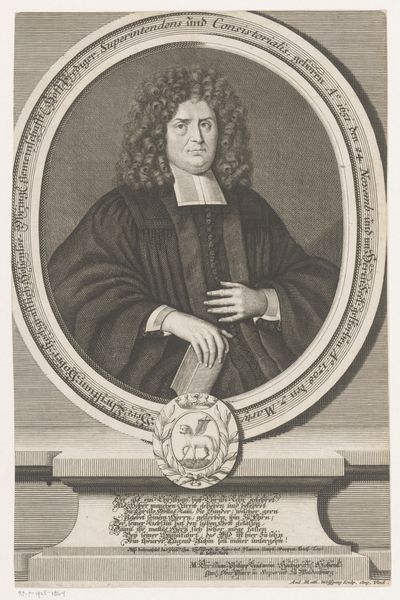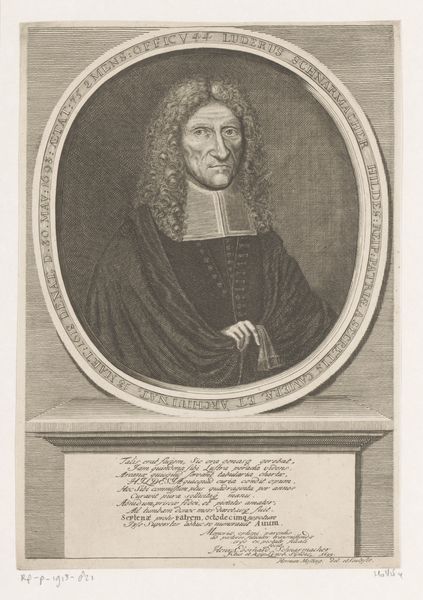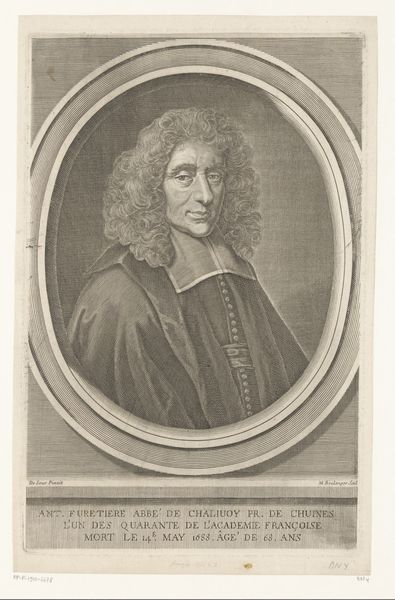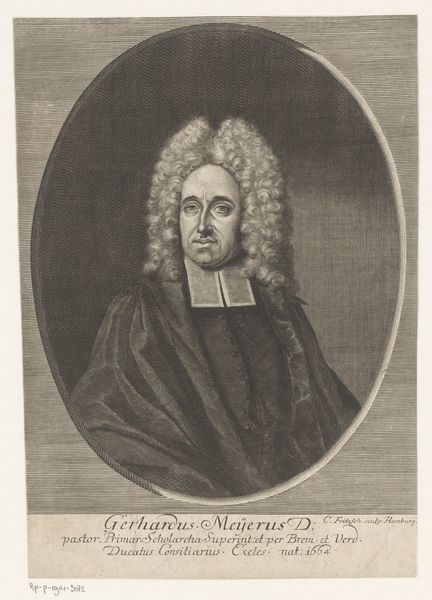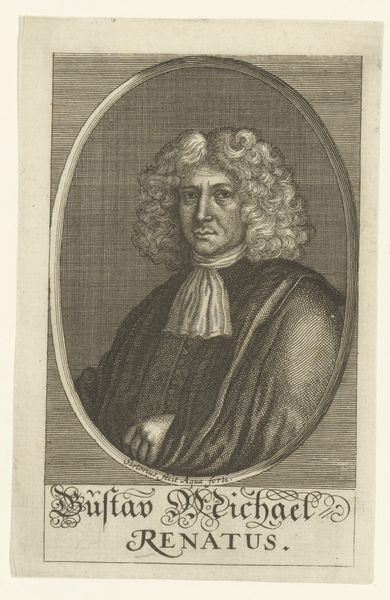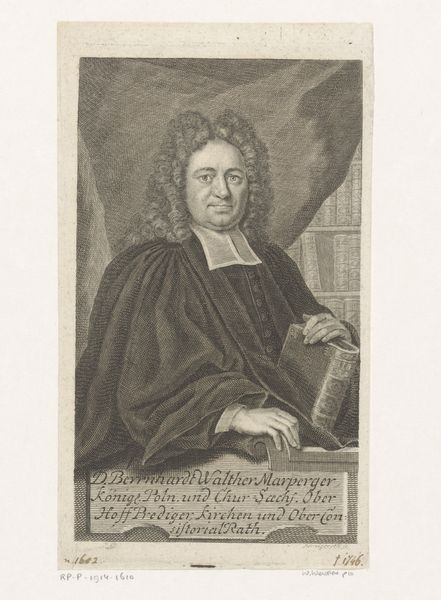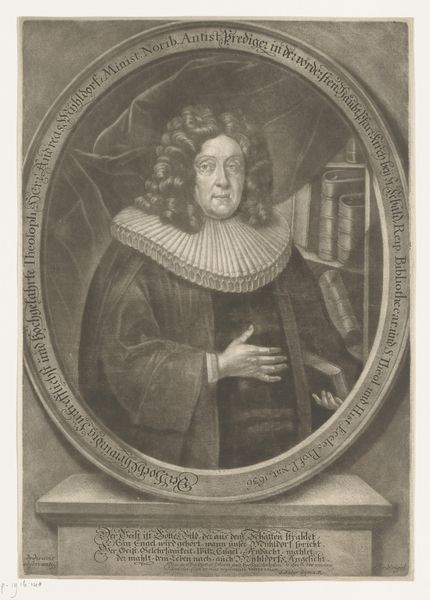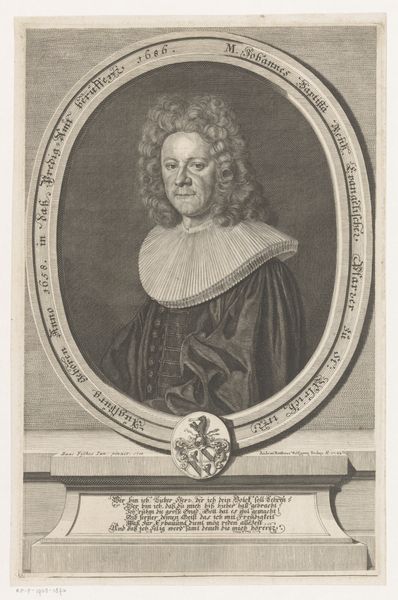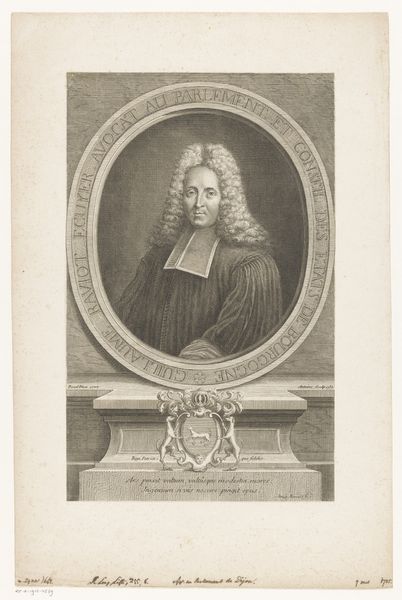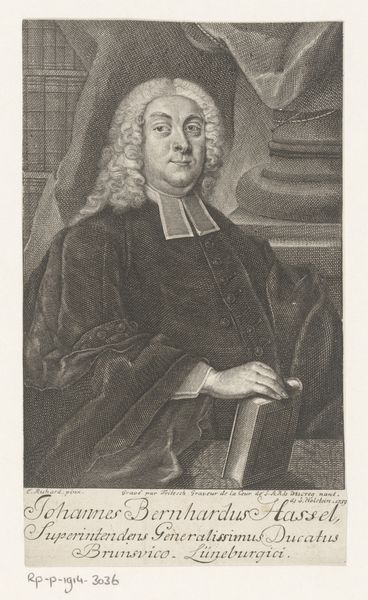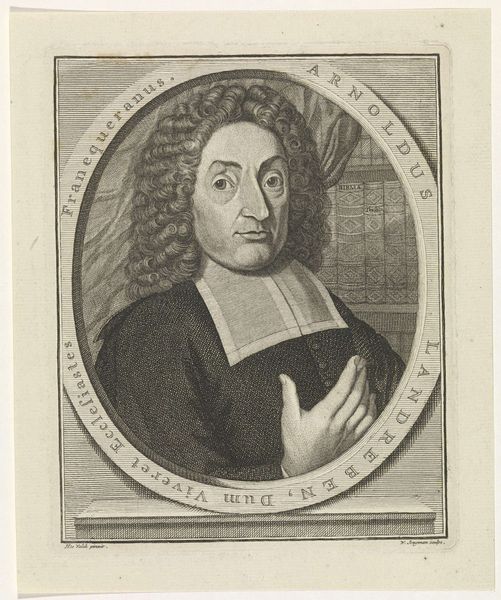
print, paper, engraving
#
portrait
#
baroque
# print
#
figuration
#
paper
#
line
#
history-painting
#
engraving
Dimensions: height 244 mm, width 164 mm
Copyright: Rijks Museum: Open Domain
Curator: What a stately print! Here we see "Portret van Balthasar Kindermann," a work attributed to Martin Bernigeroth, likely dating from around 1707. It's an engraving on paper, currently residing at the Rijksmuseum. Editor: There's an interesting solemnity to it, wouldn't you say? A quiet confidence emanating from Kindermann, almost as if he understands the weight of the book in his hands and the symbolic nature of this depiction. Curator: Indeed! Portraits like these, especially those rendered in Baroque style as this one is, often aim to convey a sense of authority and virtue. Notice the oval frame, column, and draped curtain behind him - common Baroque compositional elements elevating the sitter. The symbolic curtain opens upon his importance. Editor: The crisp lines of the engraving add to the feeling of controlled dignity. The details in his clerical garb and the rendering of his hair, particularly, suggest meticulous craftsmanship meant to denote prestige and convey cultural memory, but also there is a certain theatricality at play, almost staged to invoke a certain response, isn't it? Curator: Absolutely! It's a performance, in a way, carefully crafted to present Kindermann in a specific light to reinforce the institution and order he served. And there are other details! At the base, an inscription and the suggestion of heraldic emblems add further layers of meaning. These served to broadcast the sitter’s civic position. Editor: That connection to his history is potent; these are the visual tools deployed at the time to maintain both individual and communal memory, solidifying figures into recognizable archetypes for public consumption. He’s not just Balthasar Kindermann, the man; he’s Balthasar Kindermann, the institution. Curator: Precisely. This piece underscores how the act of portraying someone—especially someone of societal influence—contributes to the construction of a lasting cultural narrative and how images carry so much weight over time. Editor: Reflecting on the cultural memory ingrained within portraits like these, I’m reminded how powerful these images once were in shaping perception. Food for thought for any viewer stepping into our media-saturated modern age, where imagery is both ubiquitous and, in many cases, ephemeral.
Comments
No comments
Be the first to comment and join the conversation on the ultimate creative platform.
